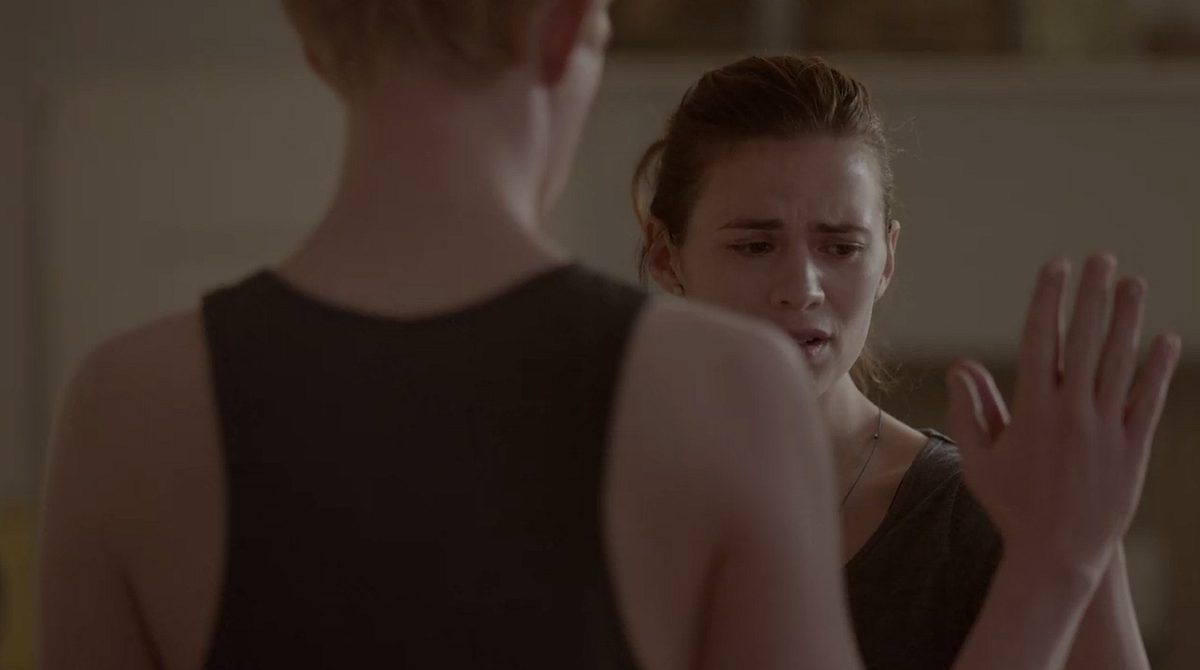Recap of “Be Right Back”

Martha and Ash live together in the countryside. Ash is kind, funny, and heavily reliant on technology, particularly social media. One morning, after returning a van, he dies in a car accident.
Martha is devastated. At the funeral, a friend introduces her to a service that uses a deceased person’s online presence—texts, social media posts, emails—to create a chatbot that mimics their personality. Despite initial reluctance, Martha signs up.

She begins texting the AI version of Ash, which eerily responds in ways that feel just like him. As she spirals deeper into grief, she upgrades to the voice call version. Eventually, she opts for the full-body replica: a lifelike synthetic body that looks and sounds exactly like Ash, with the AI uploaded into it.
At first, it feels comforting. But she quickly realizes the replica lacks real humanity. It never gets angry, never acts unpredictably, and only mimics what it thinks Ash would do. It’s too perfect. Or rather, too hollow.

Eventually, Martha takes it to a cliff and screams at it, demanding it jump. It panics and nearly does. She realizes it’s just a puppet—programmed to serve, not live. But she can’t bring herself to destroy it.
In the end, we see her storing the robot Ash in the attic. Years later, she allows her young daughter to visit it on weekends, like a strange family relic.
Main characters
Martha – a young woman dealing with the sudden loss of her partner.
Ash – Martha’s boyfriend, who dies early in the episode.
Analysis
1. Grief and denial:
The episode is a raw portrayal of grief. Martha’s journey mirrors the stages of mourning—shock, denial, bargaining (with technology), and eventual acceptance.
2. Digital identity vs. real self:
Ash’s online self is a curated version, full of habits but lacking soul. The replica feels wrong because it’s built from data, not depth. It’s a critique of how our digital personas are shallow imitations.
3. Tech and emotional manipulation:
“Be Right Back” poses the question: If we could avoid pain with tech, should we? The story warns that technology may offer comfort, but not true connection.
4. Letting go:
Martha’s final act—locking the replica away—is her way of moving on. She doesn’t destroy it, but she relegates it to the past, no longer letting it control her life.
Black Mirror Season 2 Episode 1 Ending Explained
After struggling with the artificial version of Ash, Martha can’t destroy it—nor can she accept it as truly him. She stores it in the attic, like an unwanted heirloom. In the final scene, years later, we see her daughter visiting the attic and casually interacting with the robot Ash, as if he were a strange relative.
What the Ending Means:
1. Martha hasn’t fully let go, but she has moved on.
She doesn’t keep the Ash replica in her daily life anymore. That shows emotional growth—she no longer depends on the illusion. But she also can’t bring herself to erase him entirely. The attic becomes a metaphor for her compartmentalized grief.
2. The synthetic Ash is treated like a ghost.
He’s not alive, not dead—just lingering. The attic placement reinforces that he’s a memory she visits occasionally, not a living presence in her world. He exists in limbo, just like digital legacies do—present, but not real.
3. Technology can’t replace real connection.
The replica can simulate Ash’s behaviors, but not his soul. The ending reinforces the idea that grief is painful, but necessary—and avoiding it through tech creates something unnatural and unsatisfying.
4. Her daughter’s casual attitude says a lot.
To the daughter, robot Ash isn’t shocking. He’s just “up there.” This reflects a future where such tech may be normalized, even though it’s fundamentally eerie. It also hints at generational changes in how we relate to memory and identity.
Black Mirror Season 2 Episode 1 Reviews
Critical Reception
Critics have lauded the episode for its poignant storytelling and strong performances. Hayley Atwell’s portrayal of Martha received particular acclaim, with The A.V. Club noting her ability to convey profound grief without veering into melodrama. Den of Geek highlighted the episode as a series standout, emphasizing its focus on humanity amidst technological themes.
On Rotten Tomatoes, the episode holds a high rating, with reviewers commending its meditation on loss and the complexities of trying to hold onto a loved one who has passed
Audience Response
Viewers have also responded positively to “Be Right Back.” On IMDb, users describe it as a moving and heart-wrenching tale that resonates deeply. A Reddit user shared that the episode struck a “cursed chord,” highlighting its raw and unadulterated portrayal of grief and the unsettling progression of artificial replication.
Accolades and Rankings
“Be Right Back” is frequently ranked among the top episodes of Black Mirror. Wired placed it at number six in their ranking, praising its profound sadness and brilliant acting. The episode’s exploration of themes like digital identity and the human desire to reconnect with lost loved ones has cemented its status as a standout installment in the series



